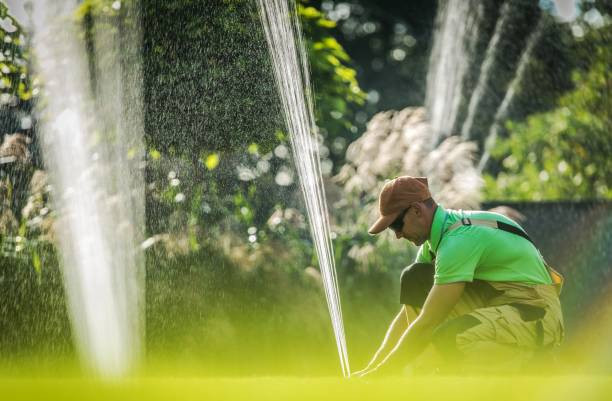Preparing your sprinkler network for autumn freeze is essential to protect pipes, valves, and heads from cracking under expanding ice. Homeowners in Florence, SC will learn why timely winterization saves money and preserves lush lawns as part of a comprehensive lawn maintenance strategy. This guide outlines four key themes:
Why fall preparation matters locally
Which irrigation components need attention
A detailed shutdown and drainage process
Deciding between DIY tools and professional winterization
By following these steps and understanding when to call in experienced technicians, you’ll secure your irrigation investment and maintain vibrant turf through winter.
Why Is Fall Irrigation System Preparation Essential in Florence, SC?
Fall irrigation system preparation involves draining water and insulating components to prevent freeze damage that leads to costly repairs. The relatively mild winters in Florence still drop below freezing at night, so removing residual moisture from sprinkler components prevents pipe bursts and valve failures.
For example, clearing water from underground lines before late November protects plastic fittings from fracturing under ice expansion.
What Are the Risks of Not Winterizing Your Sprinkler System?
Burst Pipes: Cracks in lateral and main lines cause leaks that require excavation and replacement.
Valve Damage: Ice formation in valve bodies prevents proper sealing and control.
Head Failures: Trapped moisture in sprinklers can split nozzles or casings.
Controller Corrosion: Water in low-voltage housings can short timers and sensors.
Ignoring these risks invites repair bills well above routine winterization costs, and damaged irrigation often harms surrounding turf and beds.
Protecting Irrigation Systems from Freeze Damage
Research from the Texas A&M University School of Irrigation emphasizes that freezing temperatures can severely damage landscape irrigation systems. When water freezes, it expands with enough force to crack or burst pipes, valves, fittings, and other components, leading to costly repairs if not properly prepared for winter conditions.
When Is the Best Time to Shut Off Your Irrigation System for Fall?
You should shut off your irrigation system just before temperatures consistently dip below freezing at night, typically in mid to late November in Florence, SC. Monitoring local forecasts for several consecutive nights of lows under 32°F ensures water doesn’t linger in pipes. Shutting down too early risks depriving roots of needed moisture, while waiting too long risks ice damage.
Florence, SC Freeze Statistics and Climate Data
The National Weather Service provides historical data for Florence, South Carolina, indicating that daily low temperatures can drop to an average of 34-37°F in winter months like January, with the earliest recorded freeze in October. This data underscores the necessity of timely winterization before consistent freezing temperatures arrive.
What Are the Key Components of Your Irrigation System to Winterize?
Effective winterization safeguards each main part of an irrigation network—sprinkler heads, pipes, valves, backflow preventers, and the controller—to maintain system integrity and lawn health.
Sprinkler Heads protect spray patterns by removing trapped water.
Pipes connect zones and rupture when water freezes and expands.
Valves control flow and leak if water solidifies in openings.
Backflow Preventers ensure water safety but freeze if left exposed.
Controller manages schedules and must be powered down to avoid short circuits.
How Do Sprinkler Heads and Pipes Affect Fall Maintenance?
Sprinkler heads and pipes form the water delivery network, and any trapped moisture will freeze and expand, splitting PVC or polyethylene lines and deforming head nozzles. Draining these components prevents pressure buildup and physical damage that disrupts spray coverage.
Why Should You Winterize Valves and Backflow Preventers?
Valves rely on seals and diaphragms that become brittle when water freezes, causing leaks or malfunction in spring. Backflow preventers contain internal check valves critical for water safety; insulating or removing them before frost guards against cracks and cross-connection contamination.
How Does the Irrigation Controller Impact Fall Shutdown?
The irrigation controller supplies power and timing to each zone. Turning it off at the breaker or control panel prevents electrical faults from moisture and ensures no unexpected watering cycles occur during freeze events.
What Are the Step-by-Step Methods to Winterize Your Sprinkler System?
Winterizing a sprinkler system follows a precise sequence of six actions to remove water and secure components against freezing:
Turn Off the Water Supply and Controller
Drain the System Using Manual, Automatic, or Blowout Methods
Protect the Backflow Preventer with Insulation or Removal
Insulate Above-Ground Pipes and Exposed Valves
Perform a Detailed Final Inspection
Restore Power and Water in Spring after Frost Risk Passes
How Do You Turn Off the Water Supply and Controller?
Begin by locating and closing the main shut-off valve near the meter or pump. Next, power down the irrigation controller at the circuit breaker or front panel. This prevents any residual pressure or power from affecting subsequent drainage steps.
What Are the Different Draining Methods: Manual, Automatic, and Blowout?
Sprinkler systems can be drained in three ways, each with unique requirements and benefits:
Manual Drain Method opens drain valves at system low points to let water flow out under gravity.
Automatic Drain Method uses spring-loaded valves that open when water pressure drops below a set threshold.
Compressed Air Blowout Method pushes residual water out with an air compressor at controlled PSI.
Why Is the Compressed Air Blowout Method Recommended for Professionals?
Using compressed air for blowout requires precise PSI control (typically 40–80 PSI) to avoid bursting pipes. Experienced technicians leverage calibrated equipment and training to clear every line without risking component damage, making this the preferred service for comprehensive winterization.
How Do You Winterize and Insulate the Backflow Preventer and Exposed Pipes?
After drainage, wrap the backflow preventer with foam insulation and weather-resistant tape or remove it to a frost-free location. Cover any above-ground pipes and valves with weatherproof pipe sleeves to prevent freeze cycles from compromising seals and joints.
What Final Inspections Should You Perform Before Winter?
A thorough walkthrough ensures no water remains in:
All drain valves are fully open and free-flowing
Sprinkler heads are visibly empty of moisture
Insulation around backflow and pipes is intact
Controller and wiring are dry and secured
Confirming these points closes the door on freeze damage and readies the system for safe winter rest.
Should You Choose DIY or Professional Sprinkler Winterization in Florence, SC?
Balancing cost, risk, and expertise helps homeowners decide between rental tools and certified services for winterizing irrigation systems.
DIY
Typical cost: $30–$60 rental fee
Requirement: Air compressor and basic tools
Benefit: Lower startup expense
Professional
Typical cost: $75–$150 service fee
Requirement: Certified technician and warranty
Benefit: Complete drainage and damage protection
What Are the Costs and Equipment Needed for DIY Winterization?
DIY winterization involves renting an air compressor (around $30–$60 per day) and using hand tools to open manual drain valves. Homeowners must gauge PSI carefully to expel water without exceeding pipe tolerances, and they assume full responsibility if components crack under pressure.
How Do Professional Services Prevent Freeze Damage and Save Money?
Professional winterization combines calibrated compressors, thermal insulation materials, and certified procedures to guarantee complete moisture removal. Technicians provide service warranties, reducing the likelihood of expensive repairs later and delivering peace of mind through expert care.
Benefits of Professional Sprinkler System Winterization
Professional winterization services are highlighted for their ability to prevent freeze damage through complete water removal using specialized equipment and expertise. Technicians ensure all components are protected, reducing the risk of costly repairs and extending the system's lifespan, often providing peace of mind through service warranties.
What Other Fall Lawn Maintenance Services Complement Irrigation Winterization?
Integrating fall irrigation shutdown with broader lawn maintenance sets the stage for a healthy spring lawn by building soil nutrients, improving root growth, and preventing debris damage.
Fall Fertilization replenishes soil nutrients after irrigation water is off.
Aeration and Overseeding relieve compaction and fill thin patches.
Leaf Removal eliminates debris that can smother grass and clog sprinkler heads.
How Does Fall Fertilization Support Lawn Health After Irrigation Shutdown?
Applying a balanced, slow-release fertilizer in autumn provides roots with essential nitrogen, phosphorus, and potassium at a time when water isn’t delivered by sprinklers. This nutrient boost strengthens root systems for winter resilience.
Why Are Aeration and Overseeding Important in Fall Lawn Care?
Core aeration alleviates soil compaction and enhances oxygen exchange in the root zone, while overseeding introduces fresh grass varieties that fill bald spots and improve overall density before freeze events.
How Does Leaf Removal Protect Your Lawn and Irrigation System?
Clearing fallen leaves prevents moisture trapping and fungal growth on turf, and it ensures leftover debris cannot interfere with sprinkler heads or clog pipes, maintaining clean distribution lines.
By following this fall winterization checklist and combining irrigation shutdown with expert lawn maintenance practices, homeowners secure a healthy, vibrant lawn year-round. Whether tackling winterization on your own or calling in professional technicians, taking action before the first frost ensures lasting protection and efficient water management.




